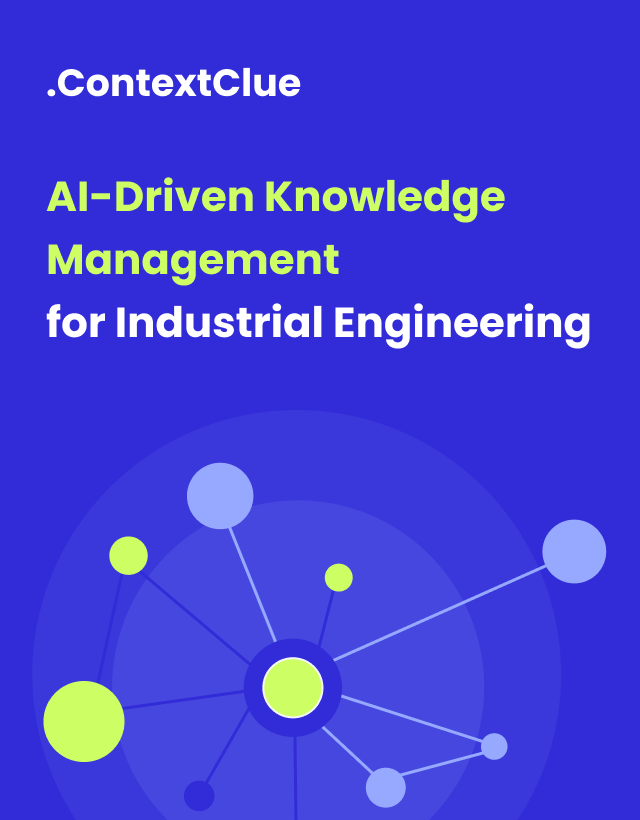
October 21, 2025
AI and Data Engineering: Building Production-Ready AI Systems
Author:

CSO & Co-Founder
Reading time:
12 minutes
When OpenAI released ChatGPT in late 2022, venture capital poured over $50 billion into generative AI startups within months. Yet a troubling pattern emerged: while AI models demonstrated remarkable capabilities in demos, most never made it to production. The problem wasn’t the algorithms—it was the data engineering infrastructure supporting them.
The relationship between AI and data engineering determines success or failure. According to Gartner research, 85% of AI projects fail to deliver. VentureBeat’s analysis found 87% of data science projects never reach production. The root cause? Data engineering failures, not model accuracy.
The gap has widened as AI evolved from batch systems to real-time applications. Early machine learning tolerated latency measured in hours. Modern fraud detection, recommendation engines, and chatbots demand millisecond responses. AI and data engineering must work together: AI needs different data freshness guarantees, scaling considerations, and architectural patterns for training versus production.
While headlines celebrate AI model breakthroughs, data engineering determines whether innovations deliver value. The most sophisticated AI fails without clean, timely data served at scale.
This article examines how AI and data engineering integration separates successful deployments from abandoned prototypes.
You’ll learn:
- How modern data engineering stacks handle AI training versus inference workloads
- Why feature stores solve the training-serving skew problem in AI systems
- How data observability prevents AI production failures
- What infrastructure AI needs to move from prototype to production
The tools have matured. Best practices have emerged. But success requires recognizing one truth: AI and data engineering aren’t separate disciplines—data engineering is the foundation determining whether AI projects succeed or join the 87% that fail.
The Modern Data Stack for AI: From Development to Production
Building successful AI systems requires two fundamentally different infrastructures working in harmony. Organizations that optimize for only one phase create models they can’t deploy or production systems that can’t improve.
Training Infrastructure: Batch Processing at Scale
Model development operates on historical data. Data scientists analyze months or years of behavior patterns to identify trends. If analysis takes hours or days, that’s acceptable, the priority is completeness and accuracy, not speed.
This phase uses batch processing infrastructure with three interconnected components:
Data Storage: Where Historical Data Lives
Data warehouses like Snowflake and Google BigQuery store structured data optimized for analytical queries. They organize information into schemas designed for complex analysis, joining customer data with transaction history, aggregating metrics across time periods, computing statistical features.
Data lakehouses like Databricks combine raw data storage (cheap and flexible like data lakes) with query capabilities (structured and fast like warehouses). This lakehouse architecture handles both structured transaction data and unstructured content like logs, images, or documents.
The choice depends on your data: warehouses excel with structured business data, lakehouses handle mixed data types efficiently.
ETL/ELT Pipelines: The Data Delivery System
Before data reaches warehouses, it exists scattered across operational systems—customer databases, transaction logs, web analytics, CRM platforms, mobile apps. Two approaches move this data:
Extract-Transform-Load (ETL) transforms data before loading it into the warehouse. The pipeline:
- Extracts data from source systems on schedules (hourly, daily, weekly)
- Transforms it – cleaning inconsistencies, standardizing formats, joining related data
- Loads results into the warehouse or lakehouse
Extract-Load-Transform (ELT) reverses the order: raw data loads into the warehouse first, then transforms run using the warehouse’s processing power. Modern cloud warehouses like Snowflake and BigQuery handle transformations efficiently, making ELT increasingly popular.
Tools like Apache Airflow, Prefect, and dbt orchestrate these pipelines, managing dependencies and handling failures. dbt particularly excels at the “T” in ELT, performing transformations directly in the warehouse.
Without pipelines, warehouses remain empty. Without warehouses, pipelines have nowhere to deliver data. They work together: pipelines are the delivery trucks, warehouses are the organized storage facilities.
Data Versioning: Reproducibility for Models
Data changes constantly. Customer records update, transactions accumulate, behavior patterns shift. If you train a model today and need to retrain next month, you must know exactly which data version produced which model.
Data versioning tools like DVC (Data Version Control) and LakeFS create snapshots of datasets at specific points in time. They work like Git for data, allowing you to:
- Reproduce training runs exactly months later
- Debug model performance by examining training data
- Compare how models perform on different data versions
- Roll back to previous datasets if needed
Versioning sits on top of storage, tracking references to specific data states rather than duplicating entire datasets.
How Training Components Work Together
The complete training flow:
- Operational systems generate data (clicks, purchases, interactions)
- ETL pipelines extract, transform, and load data into the warehouse/lakehouse
- Versioning creates snapshot: “Dataset v2.3, October 15, 2024”
- Data scientists query the versioned dataset to train models
- Model completes training, tagged with the data version used
- Future retraining references the same data version for reproducibility
Inference Infrastructure: Real-Time at Scale
Production operates differently. When users open Netflix, they expect instant recommendations. The system has milliseconds to respond. This phase demands real-time infrastructure with three components working continuously:
Streaming Platforms: Processing Live Data
Streaming platforms like Apache Kafka, AWS Kinesis, and Apache Pulsar process data as it arrives. User clicks, location updates, transactions—events stream through these systems continuously, 24/7.
Unlike batch pipelines that run periodically (nightly, hourly), streaming platforms process every event immediately. They handle millions of events per second, routing data to systems that need real-time information.
Streaming platforms are the nervous system of production AI, carrying signals as they happen.
Feature Stores: Bridging Training and Production
Feature stores like Feast, Tecton, and Hopsworks maintain features – the inputs models use for predictions – in two forms:
- Offline store (in the warehouse/lakehouse) for training with complete historical data
- Online store (in fast databases like Redis or DynamoDB) for production with millisecond access
When training, models pull features from the offline store where complex calculations run on complete data. When serving predictions, models pull the same features from the online store where they’re precomputed and cached.
Feature stores consume data from streaming platforms, compute features in real-time, and cache them for instant model access. This ensures features models see in production match exactly what they saw during training, solving the most common production failure mode.
Low-Latency Databases: Speed Through Caching
Caching databases like Redis and DynamoDB store frequently accessed data in memory for microsecond retrieval. User profiles, product details, precomputed features. anything models need instantly lives here.
These databases sacrifice the analytical capabilities and storage capacity of warehouses for pure speed. They sit at the end of the inference pipeline: feature stores write to them, deployed models read from them.
How Production Components Work Together
The real-time flow:
- User action triggers event (opens app, clicks product, requests ride)
- Streaming platform captures event and routes to processing systems
- Feature store receives event, computes features, updates online cache
- Model receives prediction request
- Model reads features from cache (microseconds)
- Model returns prediction (total: single-digit milliseconds)
Real-world example: When you request an Uber ride, your location streams into Kafka. The feature store computes real-time features—current traffic conditions, nearby driver availability, historical demand patterns for this location at this time. These features cache in Redis. The surge pricing model reads from Redis and calculates your price—all within 10 milliseconds. The system handles millions of such requests globally, each requiring features computed from live data and served from cache.
The Infrastructure Gap: Why Both Are Required
Organizations that build only training infrastructure develop models they can’t deploy. The model works beautifully on historical data but can’t access real-time information or respond fast enough for production use.
Organizations that build only production infrastructure can’t develop good models. They lack the historical depth and analytical capabilities needed to identify patterns and train accurate models.
Both phases are required, and the feature store is what connects them, maintaining consistency while optimizing for each phase’s requirements.
Feature Stores: Solving the Most Common Production Failure
A feature store is a database that sits between your model training and your production system. Its job is simple: make sure the data your model sees in production is calculated exactly the same way as the data it saw during training.
Models learn from data. If you train a fraud detection model using “customer’s average purchase amount” calculated one way, but then production calculates it differently, your model breaks. The model expects one kind of input but receives another.
This problem, called training-serving skew, is why most AI projects fail in production. The model works beautifully in testing but fails when deployed because the data doesn’t match. Feature stores solve this by storing both the calculation logic and the results, ensuring consistency between training and production.
How Feature Stores Work
Your AI system operates in two places:
- Training: Data scientists build models using historical warehouse data. Calculations can take seconds—speed doesn’t matter when you’re analyzing months of history to find patterns.
- Production: Models make instant predictions for live users. Calculations must finish in milliseconds—nobody waits while you scan transaction history.
The feature store bridges this gap. It calculates features once from your warehouse data, then caches the results. Production reads from the cache instantly. Both environments use identical calculation logic, so the numbers match.
Without a feature store: Data scientists calculate features for training. Engineers rebuild the same features for production but optimize for speed. Small differences creep in. The model that showed 94% accuracy in testing drops to 67% in production. Teams spend weeks debugging.
With a feature store: Features defined once, used everywhere. Training gets complete calculations from the warehouse. Production gets cached results updated in real-time. The model’s 94% testing accuracy holds in production. Development time drops from months to weeks.
Data Observability: Keeping Production AI Running
AI models don’t crash like broken code. They keep running, making predictions, showing normal logs, while silently producing wrong results. You discover the problem weeks later when revenue drops 15% and someone asks why.
What Data Observability Is
Data observability isn’t a standalone tool. It’s a monitoring layer that wraps around your entire AI infrastructure – the pipelines, warehouses, feature stores, and models we’ve already discussed. It makes your data engineering stack visible, catching problems before they cost money.
Just as you can’t run production applications without monitoring, you can’t run production AI without data observability.
Observability tracks four quality dimensions across your infrastructure:
- Completeness: Required fields populated (null rates staying under 2%, not spiking to 15%)
- Accuracy: Values within expected ranges (ages 0-120, not negative or 500)
- Consistency: Related values agreeing (billing country matches card country)
- Timeliness: Data arriving on schedule (nightly jobs completing on time, streams showing recent timestamps)
Observability instruments every component:
- Pipelines: Detects schema changes, validates data quality rules, tracks execution health. Tools like Great Expectations check “ages between 0-120” on every pipeline run.
- Warehouses: Monitors statistical patterns (means, null rates, distributions), alerts when patterns shift dramatically, tracks freshness and volume.
- Feature stores: Watches for drift between production and training distributions, monitors feature staleness, validates offline and online consistency.
- Models: Tracks prediction drift, monitors input feature distributions, measures performance when ground truth becomes available.
Without observability: Data quality issues degrade models for weeks undetected. Discovery happens through declining revenue. Investigation takes days. Total cost: lost revenue, customer frustration, wasted debugging time.
With observability: Alerts fire within minutes. Teams fix problems before significant business impact. Cost: minimal – fix the pipeline, maybe retrain one model.
Tools like Monte Carlo, Datafold, and Great Expectations provide this monitoring, integrating with existing infrastructure.
Production-ready doesn’t mean “deployed once.” It means “stays working reliably.”
You can build perfect training infrastructure, deploy models flawlessly, and implement feature stores correctly. Without observability, you won’t know when source systems change formats, pipelines develop bugs, features drift, or models degrade.
Observability catches these inevitable problems before they damage business outcomes. It’s the difference between AI systems that deliver consistent value and those that quietly break until someone notices revenue declining.
FAQ: Common Questions About AI Data Infrastructure
Q: Can I start with just training infrastructure and add production infrastructure later?
Yes, but this approach rarely succeeds. By the time you’ve built models on training infrastructure, you’ve made architectural decisions that don’t translate to production. Starting over costs more time and money than building both from the beginning. If budget is limited, build a minimal version of both rather than a complete version of one.
Q: How much does this infrastructure cost?
Costs vary based on data volume and scale. Startups typically spend $5,000-$20,000/month on basic infrastructure (cloud warehouse, streaming platform, feature store). Mid-size companies spend $50,000-$200,000/month. Enterprises can spend millions. The key: infrastructure costs should be 10-30% of the value AI delivers. If your AI generates $1M in value, spending $200K on infrastructure makes sense.
Q: What’s the biggest mistake organizations make?
Treating data engineering as an afterthought. Teams hire data scientists, build models, achieve great testing accuracy, then realize they have no way to deploy them. Or they deploy successfully but have no monitoring, so models silently break. Build the foundation first, then build models on top of it.
Q: Can I use managed services instead of building everything myself?
Absolutely, and you should. Use Snowflake or BigQuery instead of managing your own warehouse. Use managed Kafka (Confluent) instead of running your own cluster. Use Tecton or Feast for feature stores. Managed services cost more per month but save enormous engineering time. Only build custom infrastructure when managed services don’t meet your specific needs.
Q: What’s the minimum infrastructure to deploy my first AI model?
Absolute minimum: warehouse for training data, pipeline loading that data, deployed model with manually computed features, basic logging. This works for proof-of-concept but breaks at scale. By your second or third model, add streaming for real-time data, feature store to prevent drift, and observability to catch failures. Better to start minimal and prove value than to over-engineer upfront.
This article has been significantly updated to reflect the evolving data engineering landscape for AI systems. Updates include current infrastructure patterns (training vs. inference architecture), feature store implementations, data observability practices, and modern tooling (e.g. Databricks) that have become industry standards for production AI deployment.
Category:






